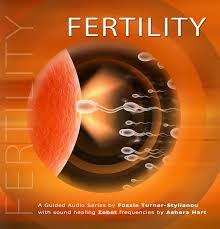NEW TESTS DEVELOPED TO STUDY MALE INFERTILITY
Prof.Dr.Dram,profdrram@gmail.com,Gastro Intestinal,Liver Hiv,Hepatitis and sex diseases expert 7838059592,9434143550
 At a time when more than half of male infertility cannot be explained by current methods, a new test developed by Androvia LifeSciences is able to measure male fertility. The proprietary Cap-Score Male Fertility Assay is based on research patented by the Travis lab at the Baker Institute for Animal Health and Cornell University's College of Veterinary Medicine and was recently the subject of a study that appeared Sept. 24 in the journal Molecular Reproduction and Development.
At a time when more than half of male infertility cannot be explained by current methods, a new test developed by Androvia LifeSciences is able to measure male fertility. The proprietary Cap-Score Male Fertility Assay is based on research patented by the Travis lab at the Baker Institute for Animal Health and Cornell University's College of Veterinary Medicine and was recently the subject of a study that appeared Sept. 24 in the journal Molecular Reproduction and Development.
"Out of all the tests commonly used to measure sperm, the Cap-Score is the only one that prospectively has been shown to indicate the probability of a man to generate a pregnancy," said Dr. Alexander Travis, professor of reproductive biology in the Department of Biomedical Sciences, director of Cornell's new Master of Public Health program, as well as Androvia's co-founder and chief scientific officer.
This marks a major improvement over semen analysis, the standard diagnostic tool for male infertility for more than five decades. Its descriptive nature fails to explain the causes of infertility or predict whether sperm will actually fertilize an egg.The Cap-Score, on the other hand, quantifies "capacitation," the changes that take place within a sperm cell that enable it to fertilize.
Travis was the first to identify ganglioside GM1 as a biomarker for a sperm's capacitation status. The first clinical samples were tested by Dr. Gianpiero Palermo, professor of embryology in obstetrics and gynecology at Weill Cornell Medicine and a member of Androvia LifeSciences' clinical advisory team. This combination of strong basic science and preliminary human clinical data led to the technology being licensed by Cornell to Androvia LifeSciences for development into a commercially practical diagnostic assay.In previous studies, the Cap-Score differentiated between cohorts of fertile men and men seeking assistance with their fertility, and retrospectively between men successful at intrauterine insemination (IUI) and those failing.
In the most recent study, 208 semen samples were collected from men having medical evaluations because of questions regarding their fertility. In addition to undergoing traditional semen analysis, Androvia scientists tested the samples and assigned them prospectively into groups predicted to have low versus normal fertility based on their Cap-Scores. Clinical outcomes were later reported for 91 of these men.
Men with normal Cap-Scores had a 2.78-fold higher chance of pregnancy than men with a low score, and a 4.23-fold higher success rate at achieving pregnancy in their first attempt at IUI. In contrast, none of the elements of semen analysis, such as sperm swimming or concentration, had any relationship with male fertility.Next, researchers collected more Cap-Scores and clinical outcomes from a total of five fertility clinics and urology practices - among them the Ronald O. Perelman and Claudia Cohen Center for Reproductive Medicine and Infertility at Weill Cornell Medicine. Using data from 124 men, scientists generated a curve that translates a Cap-Score into the probability of generating a pregnancy.
"This new ability to diagnose a man's fertility status and ability to generate a pregnancy will let doctors counsel their patients toward a personalized journey to parenthood, using the approaches most appropriate for them," Travis said. He hopes such targeted treatments will save couples time, emotional distress and money. This is especially important for patients who are attempting to get pregnant later in life, when conception rates are reduced.
Cap-Score tests are available to patients and physicians at about a dozen fertility clinics across the country.
- Kidney stones universally present hazard in north india,dillution by water prevent it
- Steroid and placebo effect equally for mild persisting asthma with low sputum eosinophils
- Government wants to fix public healthcare staff shortages with ayush docs: will it work?
- Plea in hc for payment of salaries of edmc, north mcd teachers and doctors
- 7 indian pharma companies named in us lawsuit over inflating generic drug prices
- Woman in up dies after explosion in her mouth during treatment,what is diagnosis?
- Woman in up dies after explosion in her mouth during treatment,what is diagnosis?
- Woman in up dies after explosion in her mouth during treatment,what is diagnosis?
- Air pollution ! mothers organising rally in london,anaesthetist choosing gas,will india follow?
- Cardiac arrest is always not sudden as understood -a study

 Comments (
Comments ( Category (
Category ( Views (
Views (